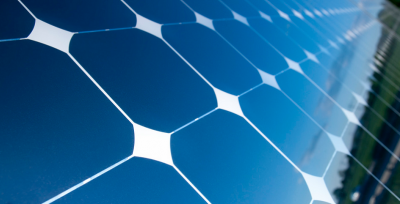On its 60th birthday, solar photovoltaic panel technology produces clean energy, employs a substantial amount of people globally, and is leading the renewable energy agenda.
This article from the Huffington Post expands on the issue:
Way back in April 25 of 1954 in Berkeley Heights, New Jersey, technicians at AT&T’s legendary Bell Labs publicly demonstrated a solar photovoltaic panel for the first time, capturing light to power the rotation of a miniature Ferris wheel. The New York Times called it “the beginning of a new era, eventually leading to the realization of one of mankind’s most cherished dreams.”
Well, “eventually” took a while, in no small part because of the estimated cost of that first PV panel: $286 per watt. Which meant that the average homeowner in 1954, if a rooftop solar array were available, could have installed one for a cool $1.43 million. (A 1954 Cadillac Eldorado, for comparison, cost less than $5,000). But without recounting 60 years of challenges and setbacks, let’s jump ahead to where solar energy deployment, by almost any measure, is today. It’s booming.
Propelled by the 80 percent drop in module prices in the past five years, and even more so by finance innovations like leasing and power-purchase agreements, residential and commercial solar installations are by far the hottest sector in clean-energy generation. Statistical evidence abounds, but here are a few of my favorite facts and figures:
As Clean Edge noted in our recent Clean Energy Trends 2014 report, in 2013 the world installed more new gigawatts of solar PV (36.5 GW) than wind power (35.5 GW) for the first time.
More Americans (143,000 in 2013) work in the solar industry than the coal industry. In Texas, there are more solar workers than ranchers, and in California, more solar employees than actors.
Warren Buffett has invested an estimated $7 billion in solar generation facilities.
More than 60 percent of U.S. homeowners say they’re interested in installing solar, and 73 percent say they would welcome clean energy provided by an entity other than their utility, according to the Solar City-Clean Edge poll released in March.
Earlier this month, First Solar’s Agua Caliente plant in Yuma, Arizona became the world’s largest PV generation facility with capacity of 290 MW.
Solar accounted for 28.7 percent of new U.S. generation capacity in 2013, trailing only natural gas (46 percent) among energy sources. “Solar is now sitting at the big kids’ table,” says GTM Research senior VP of research Shayle Kann.
As is well known, the solar boom in the U.S. (with a few exceptions) is not a manufacturing success story. It’s focused on the “downstream” sector of deployment and installation. But this sector has proven to be a rich source of innovation and startup energy in many diverse aspects of the solar value chain.
Many of today’s best entrepreneurial minds are working to make solar ever more accessible, focusing on new financing options and reducing soft costs like permitting and customer acquisition.
Hashtags: #solarenergy #solartechnology #photovoltaic #greenenergy















Comments